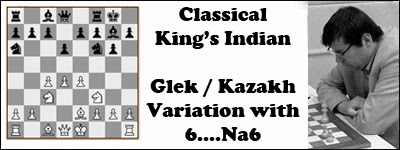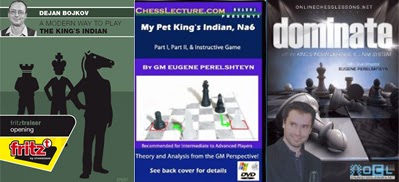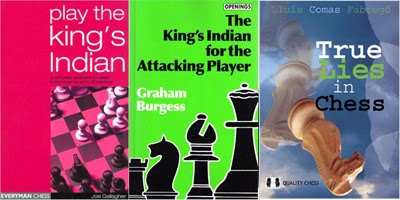 |
| Position after 9.Nbd2!? |
There have been some recent publications on IM Jiri Nun's variation of the Milner Barry Gambit (1.e4 e6 2.d4 d5 3.e5 c5 4.c3 Qb6 5.Nf3 Nc6 6.Bd3 cxd4 7.cxd4 Bd7 8.O-O Nxd4 9.Nbd2!?), which some would rename the "Misa Pap Attack" after its most recent and public GM advocate (see videos below). In analyzing the game Melekhina-Forestier, Poland 2010, I definitely gained some respect for this gambit line against the French Defense, and there are many attractive lines in GM Misa Pap's recent analysis in Chess Informant #113 (available for instant download for only $3.99). Besides Nun, Pap, and Melekhina, GM David Smerdon has used the gambit on occasion. The line receives only passing reference in books; for instance, Sam Collins in The French Advance (2nd ed. Everyman 2006) gives only the game Jesus Baron Rodriguez - Carlos Matamoros Franco, Campillos 2005 as his example. So fans of surprise lines (and perhaps fans of the Smith-Morra) are sure to find it attractive.
- Philipper. "Beating French with Advance Variation." Chess.com (2014)
Offers two games with the Pap Attack. - Misa Pap, C02 French Advance by Pap (2013)
Printable PDF file + PGN file on the line, with analysis by GM Miso Pap from Informant 113. - GM Misa Pap Shows You How to Play Aggressive Chess. Onlinechesslessons.net (2012)
- French Advance, Milner Barry and Nd2 Gambit. Chessgames.com (2012)
A game collection from Chessgames.com by someone with the handle "senselessname." - Michael Goeller, Sidelined in the Milner Barry Gambit (2010)
Analyzes a nice win for White with this line in Melekhina - Forestier, Poland 2010. I would not be surprised to see a full length video coming out from Empire Chess by Melekhina on the line (see video below). - Shaun Press, 2008 Anu Open -- Round 1. ChessExpress Blog (2008)
Posts the game Smerdon - Grcic [C02] ANU Open, 26.07.2008. - Mila Bjelajac, "9.Nbd2!? in the C02 French Defense." ChessCafe (2005)
A very detailed article from the Informant, especially for those looking for a free theory reference. - Introduction to the Milner Barry Gambit (PDF). The New Chessplayer.
Includes a useful collection of games with 9.Nbd2.












